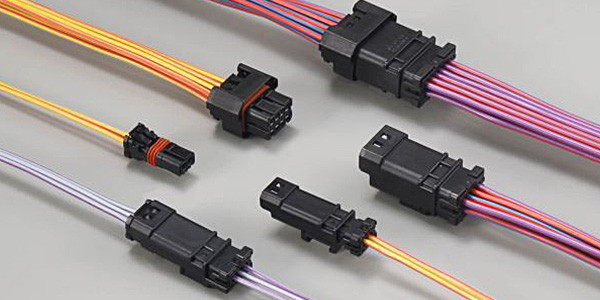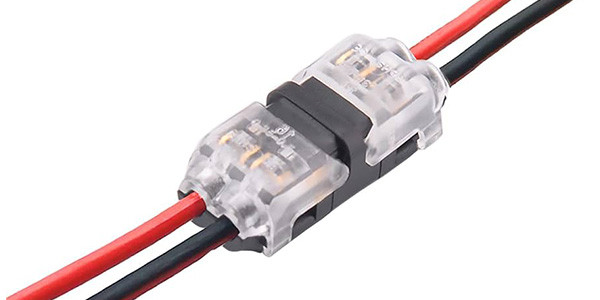Automotive Low Voltage Connectors
Powering the Future of Mobility
Automotive Low Voltage Connectors: Powering the Future of Mobility

In the intricate world of modern vehicles, electrical systems serve as the backbone, enabling everything from basic functions like lighting to sophisticated features such as advanced driver-assistance systems (ADAS) and infotainment platforms. At the core of these systems are automotive low voltage connectors, specialized components designed to ensure reliable, safe, and efficient electrical connections throughout a vehicle. In the automotive context, “low voltage” typically refers to systems operating at 12 volts (V) or 24V, which power a wide array of components essential to vehicle operation.
As cars evolve into increasingly electrified, connected, and autonomous machines, the significance of low voltage connectors has escalated. These connectors must not only manage growing electrical demands but also endure the harsh conditions of automotive environments—think temperature swings, vibrations, and exposure to moisture or chemicals.
Table of Contents
ToggleTypes of Automotive Low Voltage Connectors
Automotive low voltage connectors are not a one-size-fits-all solution; they vary widely depending on their specific applications within a vehicle. To understand their diversity, we can categorize them into three primary functions: power distribution, signal transmission, and data communication.
1. Power Distribution Connectors
These connectors are engineered to handle higher currents, making them essential for systems that demand significant electrical power. Examples include:
- Battery Connectors: These link the vehicle’s battery to the broader electrical system, ensuring a steady power supply to all components.
- Alternator Connectors: They connect the alternator to the battery or power distribution unit, facilitating the charging process.
- Starter Motor Connectors: Critical for delivering the high current needed to crank the engine and start the vehicle.
Power distribution connectors are typically larger and feature robust designs, often with locking mechanisms to prevent disconnection under load and ensure safety.
2. Signal Transmission Connectors
Signal connectors focus on low-current applications, transmitting control signals rather than power. They are vital for components such as:
- Sensor Connectors: Used in oxygen sensors, temperature sensors, and pressure sensors to relay data to the vehicle’s electronic control units (ECUs).
- Actuator Connectors: Connect devices like fuel injectors, solenoids, and relays that control mechanical actions.
- Lighting Connectors: Facilitate connections for headlights, taillights, and interior lighting systems.
These connectors are often smaller and may incorporate shielding to protect against electromagnetic interference (EMI), ensuring signal accuracy.
3. Data Communication Connectors
With the rise of digital systems in vehicles, data connectors have become indispensable for enabling communication between various electronic modules. Key examples include:
- CAN Bus Connectors: Support the Controller Area Network (CAN) protocol, allowing ECUs to communicate efficiently.
- Ethernet Connectors: Increasingly used for high-speed data transfer in ADAS and autonomous driving systems.
- USB and HDMI Connectors: Found in infotainment systems, enabling connectivity with external devices like smartphones or media players.
Data connectors require precision engineering to maintain signal integrity, minimize latency, and support the growing bandwidth needs of modern vehicles.
Industry-Standard Connectors
To streamline manufacturing and ensure compatibility, the automotive industry relies on several standardized connectors. Notable examples include:
- Deutsch Connectors: Renowned for their durability and environmental sealing, ideal for heavy-duty applications.
- Molex Connectors: Offer versatile solutions like the Mini-Fit and Micro-Fit series for power and signal needs.
- Tyco/AMP Connectors: Widely adopted, such as the AMPSEAL series, for reliable performance in harsh conditions.
These standardized options enhance interoperability, allowing manufacturers to source components from multiple suppliers while maintaining consistency.
Importance of Automotive Low Voltage Connectors
The significance of low voltage connectors in automotive applications cannot be overstated. They are foundational to the reliability, safety, and performance of a vehicle’s electrical systems. Here’s why they matter:

1. Ensuring Electrical Continuity
Connectors serve as the critical link between components, ensuring uninterrupted power and signal transmission. A single faulty connector can disrupt an entire system—imagine a loose connection halting the fuel pump or disabling a safety feature like airbags.
2. Enhancing Safety
Safety is a top priority in automotive design, and connectors play a key role in preventing electrical hazards. Features like insulation, secure locking mechanisms, and strain relief minimize risks of short circuits, arcing, or fires, protecting both the vehicle and its occupants.
3. Enabling Modularity and Serviceability
Connectors facilitate a modular approach to vehicle design, allowing components to be easily installed, replaced, or upgraded. For instance, a malfunctioning sensor can be swapped out without rewiring, reducing repair time and costs.
4. Supporting Electrification
As vehicles shift toward hybrid and electric powertrains, the demand for reliable low voltage connectors grows. These connectors are integral to battery management systems, power distribution networks, and auxiliary systems, handling increased electrical loads with precision.
5. Impacting Vehicle Performance
The reliability of connectors directly affects vehicle performance. A degraded connection in the anti-lock braking system (ABS) could compromise braking efficiency, while a failure in the engine control unit (ECU) wiring could lead to misfires. In short, connectors are linchpins of dependability.
Statistics underscore their importance: a study by the National Highway Traffic Safety Administration (NHTSA) found that electrical system failures, often linked to connector issues, account for a significant portion of vehicle recalls. This highlights the need for high-quality connectors in ensuring both safety and functionality.
Challenges in Designing Automotive Low Voltage Connectors
Creating connectors that meet the rigorous demands of automotive applications is no small feat. Engineers face several challenges:
1. Environmental Stresses
Vehicles operate in punishing conditions, and connectors must endure:
- Temperature Extremes: From freezing winters to scorching engine bays (often exceeding 100°C).
- Vibrations: Constant motion and engine vibrations can loosen connections over time.
- Moisture and Chemicals: Exposure to water, oil, and road salts necessitates robust sealing.
- Dust and Debris: Connectors in exposed areas must resist contamination.
Solutions include IP-rated seals (e.g., IP67 for water and dust resistance), corrosion-resistant materials like gold-plated contacts, and vibration-damping designs.
2. Miniaturization
With vehicles packing more electronics into tighter spaces, connectors must shrink without compromising performance. High-density pin arrangements and lightweight materials are key to achieving this balance.
3. Electromagnetic Compatibility (EMC)
The proliferation of electronic devices increases the risk of EMI, which can disrupt signal transmission. Shielded connectors and careful layout design are essential to maintain EMC.
4. High Reliability Under Load
Connectors must perform consistently under high electrical loads, minimizing resistance to prevent overheating and ensuring secure connections during operation. This often requires advanced materials and rigorous testing.
5. Cost Constraints
Despite these demands, automakers operate under tight budgets. Connectors must strike a balance between performance and affordability, often relying on mass production and standardized designs to keep costs down.
Evolution of Automotive Low Voltage Connectors
The history of low voltage connectors reflects the broader technological advancements in the automotive industry. Here’s a look at their journey:

1. Early Automotive Connectors
In the early 20th century, vehicles had minimal electrical systems, limited to ignition and basic lighting. Connectors were simple plug-and-socket designs with little protection against environmental factors.
2. Standardization and Modularization
By the mid-20th century, as electrical systems grew more complex, standardized connectors like blade fuses and spade terminals emerged. This shift improved interoperability and simplified repairs.
3. Introduction of Sealed Connectors
The 1980s and 1990s marked a turning point with sealed connectors, designed to withstand moisture and dust. This was crucial as electronics spread to more vulnerable areas of the vehicle.
4. Rise of Data Connectors
The 1990s brought onboard diagnostics (OBD) and in-vehicle networks like CAN bus, necessitating connectors for high-speed data transfer. This era saw connectors evolve to support digital communication.
5. Advancements in Materials and Design
Recent decades have introduced high-temperature plastics, corrosion-resistant metals, and features like positive locking and color-coding. These innovations enhance durability and usability.
6. Integration with Advanced Systems
Today, connectors underpin cutting-edge technologies like ADAS, infotainment, and electric powertrains. High-density, high-reliability designs now handle both power and data in compact packages.
Future Trends in Automotive Low Voltage Connectors
The automotive industry is at a crossroads, with electrification, autonomy, and connectivity driving change. Here’s how these trends will shape low voltage connectors:
1. Electrification and Higher Voltage Systems
While 12V and 24V remain standard, the rise of 48V systems in EVs and hybrids demands connectors that can handle increased power efficiently and safely.
2. Autonomous Driving and Sensor Integration
Self-driving cars rely on sensors, cameras, and radar, all requiring robust connections. Future connectors will need to support high-bandwidth data and withstand continuous use.
3. Vehicle-to-Everything (V2X) Communication
V2X technology, enabling vehicles to communicate with each other and infrastructure, will require connectors optimized for real-time data exchange, potentially blending wired and wireless solutions.
4. Sustainability and Lightweighting
To reduce vehicle weight and environmental impact, connectors may adopt lighter, eco-friendly materials like recycled plastics or bio-based composites.
5. Smart Connectors
Emerging “smart” connectors with built-in sensors could monitor connection quality, detect faults, and predict maintenance needs, boosting reliability.
Case Studies: Real-World Applications
Case Study 1: Tesla’s Battery Management System
Tesla’s electric vehicles rely on a sophisticated battery management system (BMS) to monitor and control battery cells. Low voltage connectors in the BMS handle power and data, ensuring cell balance and preventing overheating. Tesla uses custom connectors with high-temperature resistance and IP-rated sealing to thrive in the battery pack’s harsh environment.
Case Study 2: BMW’s ADAS Integration
BMW’s ADAS features, like lane-keeping assist, depend on sensors linked by low voltage connectors. These connectors maintain signal integrity despite vibrations and temperature changes, using shielded designs and locking mechanisms for reliability.
These examples showcase how connectors are tailored to specific needs, balancing performance and durability.
Standards and Regulations
Automotive low voltage connectors are governed by strict standards to ensure safety and performance:
- ISO 8092: Defines connector dimensions and requirements.
- ISO 6722: Specifies cable standards impacting connector design.
- SAE J1939: Governs CAN bus connectors in heavy-duty vehicles.
- IEC 60529: Sets IP ratings for environmental protection.
Compliance is non-negotiable, preventing safety risks and ensuring global compatibility.
Conclusion
Automotive low voltage connectors are vital to the functionality and safety of modern vehicles. As the industry advances, these unsung heroes will continue to evolve, meeting the challenges of tomorrow’s mobility with innovation and resilience.
